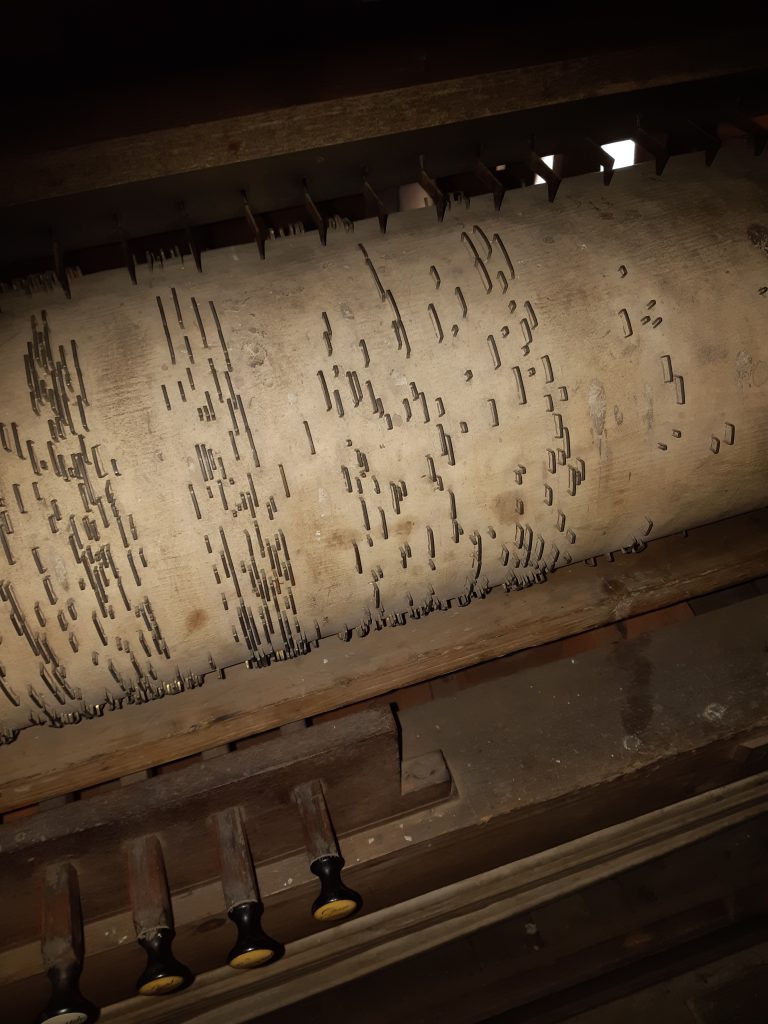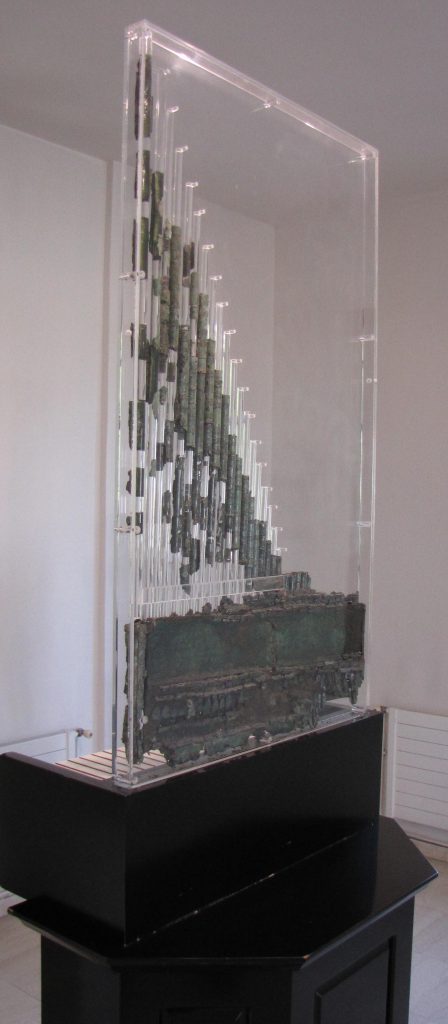The Brightling Barrel Organ – 200 years old next year
Brightling church is unusual in having not one, not two, in fact no fewer than three church organs. There is the Viscount Envoy 23-S electric organ, installed in 2018, which is the one now in regular use; the Percy Beard Pipe organ, installed sometime in the 1930s; and the Barrel Organ, which is said to have been installed in about 1820, a gift of Jack Fuller.
That is a new organ roughly every 100 years. Given that we don’t know exactly when the barrel organ was installed, we are free, I think to declare 2022 as its bicentenary, and perhaps think about how this might be celebrated. Or perhaps, as we already have one jubilee this year, we could declare 2023 as the anniversary. That’s the advantage of a flexi-birthday; nothing has yet been decided.
There was also an earlier Barrel Organ which was replaced by Jack Fuller’s organ. Anne Holman, in her book on Brightling 1700 – 1950 (see Books and Publications for details of purchasing a copy) mentions it and we can do no better than to quote her research:
“It was shipped to New Zealand in November 1929 and subsequently arrived in August 1830, having travelled via Tasmania. The organ was used for many years in Paihi and when Henry (Rev.Williams) later had his own church built in Pakaraka, the organ followed him there. In 1867 Henry bequeathed it to his son who subsequently passed it on to his son Rev. A.E. Williams, who together with Samuel H. Drew, co-founder of the Wanganui Museum, was visiting the Bay of Islands, had it transported to the Museum by wagon and ship. By then the instrument was in a very dilapidated state: the leather bellows having been chewed by mice, the metal pipes removed and used as fishing weights and the barrels used as seesaws by the children. Samual set about repairing it and on Good Friday 1898, in the dead of night, he played it for the first time whereupon he wrote ‘ I felt strangely moved at that late hour, to hear the sweet sympathetic tones pour from that old box….The tunes seemed ghostlike and weird. It seemed as though the organ had died years ago and yet was speaking its music to me and to me alone….’. The organ is still at the Museum today and the fact that it was the first such intrument to arrive in New Zealand and that much of it has survived has made it a relic of great historic importance”
It seems, in 1999 it was extensively restored and is now played on a regular basis.
One project, which we have already started, is to make an audio recording of every tune on the barrel organ. I should explain that the barrel organ plays tunes that are encoded on a barrel (roughly – very roughly – comparable to the way that tunes are encoded on a vinyl LP). We possess two barrels, and each barrel contains twelve tunes. The team in charge of the recordings consists of Mark Bridge (music director), Chris Wing (Foley artist), Jez Lipscombe (best boy) and me (executive producer). We went up there on 8th January and ran through both barrels.

A barrel organ is basically a pipe organ. The sound is made by air coming out of pipes of various lengths – the longer the pipe the deeper the note. The air itself comes from a reservoir known as the chest, and the air pressure in the chest is maintained by a human operator using a foot or hand pump. In modern (and modernised) organs the air pressure is provided by an electric motor, but many pipe organs still retain their original manual pumps as well. In fact, if you were in Mountfield Church on one Christmas Day in the 1990s (I forget the exact year) you might have noticed me and Ken Taylor dashing up to the organ loft and pumping furiously by hand after the electric motor failed half-way through the service – warm work for us, while Jackie Spriggs coolly tickled the ivories, but at any rate we managed to keep the show on the road.
Pipe organs have been around for longer than one might think. The original pipe organ, known as the hydraulis was developed by Ctesibius of Alexandria, an engineer of the 3rd century BC. This was not an imaginary instrument, like Leonardo da Vinci’s helicopter; these organs really existed; there are many mosaics showing them in operation and archaeological remains of a number of them have been dug up. In 1992, the remains of a 1st-century BC hydraulis were found at Dion, an ancient Macedonian city near Mount Olympus, Greece. This instrument consisted of 24 open pipes of different heights. It can be seen today in Archaeological Museum of Dion and is surprisingly complete. So complete, in fact, that it was possible to build an accurate modern working replica. You can see a video of it being played at https://www.youtube.com/watch?v=zZey_H8qmQA

https://commons.wikimedia.org/w/index.php?curid=62539203
The hydraulis was a keyboard instrument, the same basic design as the modern pipe organ. The keys of the hydraulis were “balanced”, meaning that they could be played with a light touch, as is clear from the reference in a Latin poem by Claudian (late 4th century), which includes the words magna levi detrudens murmura tactu…intonet, “let him thunder forth as he presses out mighty roarings with a light touch”.
I really like the words “let him thunder forth as he presses out mighty roarings with a light touch” I’m thinking of having them inscribed and placed above the newest Brightling organ.
This is the first in a series of articles about the Brightling barrel organ. In future articles I will describe the workings of the Brightling barrel organ, the secret of its tuning, and something of its history.